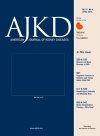Urine Oxalate Excretion and CKD Stage in Patients With Primary Hyperoxaluria Type 1
Primary hyperoxaluria type 1 (PH1), caused by pathogenic variants in the AGXT gene that encodes hepatic alanine glyoxylate transferase (AGT), is characterized by markedly increased urinary oxalate (UOx) excretion. Features include urinary stones and nephrocalcinosis, often in childhood.1 Intrarenal calcium oxalate crystal deposition can result in progressive chronic kidney disease (CKD) and kidney failure onset between infancy and 40 years old.2-4 Kidney failure risk in PH1 is associated with the degree of hyperoxaluria3; data support UOx as a surrogate endpoint in clinical trials of new therapies.



